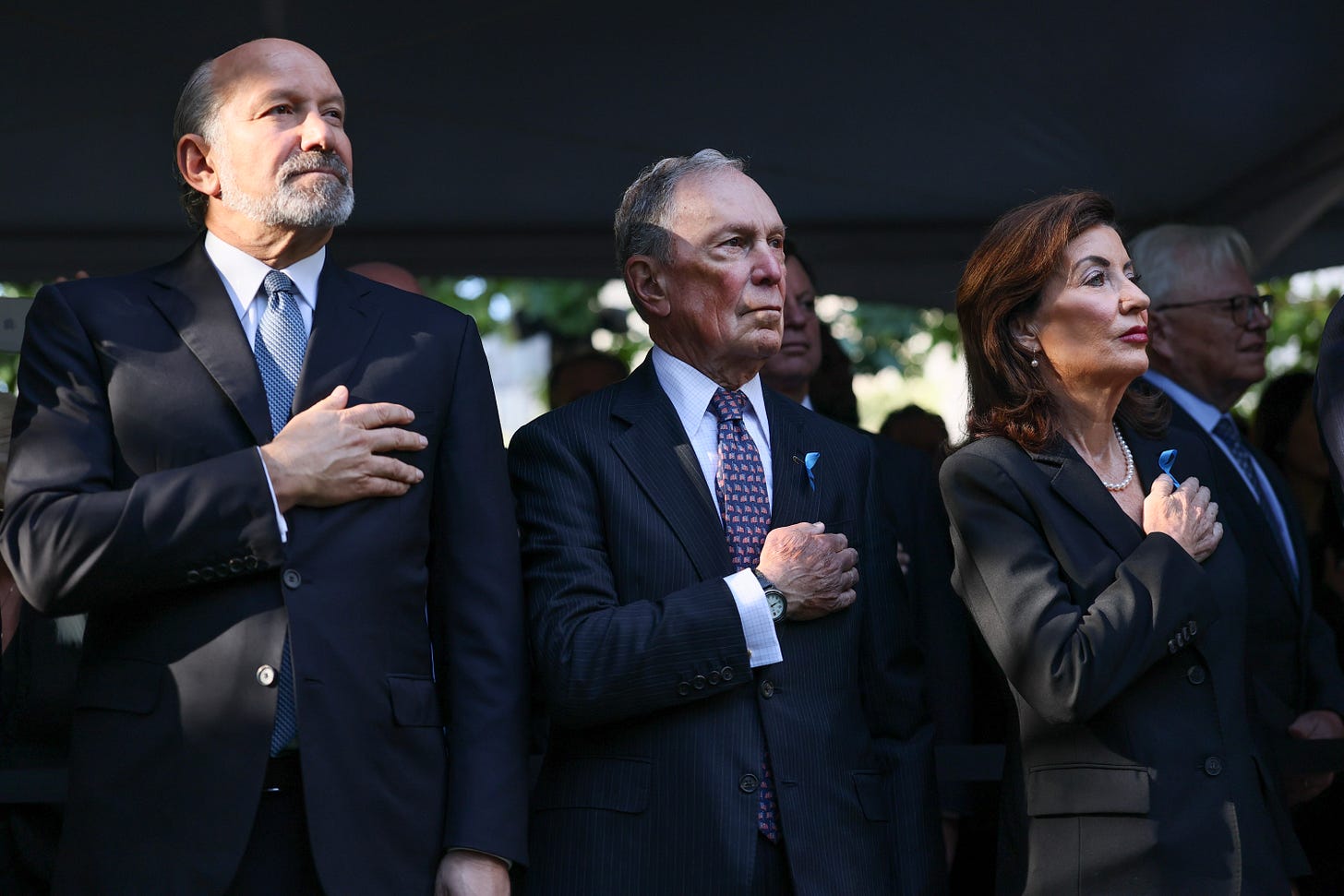- Mamdani's Voting Choice: Voted for himself on Working Families Party line, emphasizing loyalty to progressive movement over Democratic establishment.
- WFP Success: All 32 WFP-endorsed candidates won, including key positions like Public Advocate, District Attorneys, Borough Presidents, and City Council members.
- Progressive Influence: WFP and DSA represent rising power, extending to Albany for policy support like tax hikes.
- Establishment Shift: Progressives now form New York's political establishment, predicting decline of moderate elite.
- Election Dynamics: Mamdani secured narrow majority against scandal-plagued opponent Andrew Cuomo, who had low favorability.
- Campaign Tactics: Mamdani's victory driven by effective ground game and turnout of young voters, contrasting Cuomo's weak campaign.
- Progressive Strategy: Opposition to open primaries and election cycle changes preserved influence in Democratic primaries.
- Moderate Response: Centrists urged to build organizations or third party to challenge progressives, drawing from San Francisco model and New York's fusion voting history.
[

Courtesy Michael M. Santiago/Getty Images.
When Zohran Mamdani, now mayor-elect of New York City, went to the polls last Tuesday, he didn’t vote for himself on the Democratic ballot line he had wrested from Andrew Cuomo five months earlier. Rather, Politico’s Jason Beeferman reported, Mamdani voted for himself on the line controlled by the Working Families Party, a third party that backs progressive challengers to Democrats in an effort to push them to the left. The vote was a nod to Mamdani’s outsider status—at the end of the day, his loyalty is to the union-backed movement the WFP represents, not to the Democratic establishment that preferred Cuomo.
But after Tuesday’s results, it’s not clear that Mamdani and his friends are still “outsiders.” Every single one of the 32 WFP-endorsed candidates won his or her election. These included not just Mamdani, but Public Advocate Jumaane Williams; the Manhattan and Brooklyn District Attorneys; the Manhattan, Bronx, and Brooklyn borough presidents; and 25 members of the 51-member City Council. As Joseph Burns wrote in City Journal following Mamdani’s primary win, the WFP’s influence extends to Albany, where Mamdani will need support to get his promised tax hikes approved. Mamdani’s candidacy also represents the rising power of another progressive org: the Democratic Socialists of America (DSA), the reach of which Mamdani aimed to grow when he first began running.
If anything, these two organizations, and the broader progressive movement, are New York City’s “establishment” now. Indeed, many are predicting the demise of the New York City moderate elite—some gloomily, some gleefully. Is New York fated, by the inalterable logic of history, to a future of “socialism on the Hudson”?
Not necessarily. Mamdani’s victory—and the broader progressive takeover of New York City’s government—isn’t really the result of a socialist revolution in public opinion. Rather, it represents a concerted political effort on the part of the progressives, combined with the complacency of the city’s moderates. The left, through groups like the DSA and WFP, staged an insurgency and won. If the center wants to retake the city, it needs to play the same game—and win.
One way to understand New York’s mayoral election is as a sweeping victory for the city’s progressive faction. But another is that their tribune secured barely a majority of the vote. This, in spite of the fact that his primary opponent had already lost the primary; was 20 points down in favorability in the days before the election; was implicated in multiple major scandals that had driven him from the state’s governorship; and is generally an object of hatred across the entirety of New York State politics. (Even worse: his other opponent was, horror of horrors, a Republican.)
As Jesse Arm recently wrote, the notable thing isn’t that Mamdani won, but rather how far he ran behind moderates and fellow executive candidates Abigail Spanberger and Mikie Sherrill in their respective races. With a different candidate running against Mamdani—a possibility discussed but never realized after the primary—it’s quite possible the race would have gone the other way.
[

Source: New York Times
Within his narrow margin, Mamdani’s success is attributable not so much to the inexorable march of progress as it is to his campaign’s superior tactics. After all, there is little doubt that if Cuomo had won the primary, a Mamdani challenge on the WFP line in the general would have been futile. But Mamdani’s primary success was at least in part about the effectiveness of his turnout machine, which drove tens of thousands of younger New Yorkers to vote for the first time. His ground game—powered by the DSA and WFP—was so effective that it transformed the entire primary electorate, resulting in a shocking polling miss.
Cuomo, by contrast, ran an anemic campaign, defined primarily by out-of-date ads and the occasional presser. Observers were left with the impression that the former Governor, scion of a political dynasty, felt entitled to his comeback. Talk to almost anyone in New York and they’ll tell you they spoke to Mamdani canvassers; no one remembers anyone in a “Hot Girls for Cuomo” shirt knocking on their door.
This inertia, though, is not limited to the mayoral race. Alvin Bragg, the arch-progressive prosecutor in Manhattan, barely faced a primary challenge; Eric Gonzalez, Brooklyn’s DA, didn’t even have to compete in a primary and was uncontested in the general. Infamous progressives on the Council like Tiffany Cabán, Sandy Nurse, Lincoln Restler, and Shanana Hanif faced no or no real primary challenge. All of these people will greenlight Mamdani’s agenda. In the case of radical changes like abolishing the NYPD’s gang database, they will probably be the ones pushing for change.
The progressives, moreover, know how important their ground game is to their success. That’s why the WFP worked to kill an amendment to the City Charter that would have created an open primary system—ensuring that registered WFP voters would be shut out so that they would have an easier time influencing the Democratic primary. And it’s why Mamdani voted no on proposition 6, which would have moved New York City’s local elections to the same cycle as national elections, increasing the size of the electorate and making organizing less effective. In other words, if you doubt that the progressive machine made the difference, recognize that the left sure thinks it did.
On election night, myself and fellow City Journal contributors
and
were joined in conversation by
’s Mike Solana. For me at least, the most interesting part of the conversation was Mike’s detailing of how San Francisco elected its current, more moderate leadership. In his telling, decades of dominance by progressives was undermined by concerted action on the part of the city’s more moderate residents, mobilizing around objections to progressive excesses, and focusing on the minutiae that are needed to win elections. To translate: moderates took San Francisco back by actually trying to win.
It would be easy for New York City centrists to throw their hands in the air and insist that Mamdani is the future, which we all had better get used to. But that would avoid the hard truth that this was a winnable race, and that Mamdani’s victory is the culmination of years of progressive insurgency largely unchallenged.
The progressive have won; they are the establishment. Which is why the moderates, rather than giving up, need to start acting like they’re the outsiders. If groups like the DSA and WFP are running the show, then moderates need their own institutions—even their own third party—to hold the new progressive establishment accountable.
The use of third parties for such purposes—buoyed by New York’s unique electoral “fusion” laws—is far from unprecedented. Bill Buckley’s quixotic 1965 campaign for the mayoralty was on a third party line; so was John Lindsay’s reelection bid four years later. Mario Cuomo narrowly lost to Ed Koch on the Liberal Party line in 1977; and Giuliani won on a Republican-Liberal fusion ticket in 1993, with the Liberal-line votes putting him over the top. Mike Bloomberg used the Independence Party line throughout his campaigns, both as a Republican and as a registered Independent. The WFP has not been the only party to try to discipline Democrats by selectively running candidates; the New York Conservative party did so as well, long after Buckley’s campaign was over.
A new moderate party could do the same for the numerous progressives now in charge of New York’s government. It could build enthusiasm for moderate candidates, taking advantage of the generous election laws that the WFP has used so successfully to its advantage. There’s at least one obvious electoral vehicle—the essentially moribund Liberal Party of New York, which endorsed Cuomo in 2025. If the LPNY can’t be wrested from its current controllers, then another party could be stood up easily—imagine a 2029 nominee running on the Prosperity Party line.
Even if a third party isn’t right, moderates need some sort of public-facing organization. The results last Tuesday indicated that a sizable fraction of New Yorkers are skeptical of their new Mayor. They can’t be welcomed into smoke-filled rooms, but they can join clubs, mailing lists, or any other infrastructure that might be on offer.
How could such a group hold New York’s progressive establishment accountable? San Francisco offers a good model: publicize and criticize the sort of excesses that scare off even New York’s left-leaning electorate. As recent MI polling showed, while Mamdani is popular in the city, many of his ideas are not. When progressives—not just Mamdani, but Councillors, borough presidents, and appointed officials—oppose fare enforcement or the city’s gifted and talented program, they’re at odds with a majority of Gothamites. Thus far, they’ve mostly managed to avoid scrutiny for these views; some adept social media wrangling could easily change that.
After all, if moderates are no longer the establishment, then the city’s problems are no longer their fault. There’s nothing quite so liberating as being out of power: you get to make all the criticisms, while your opponent has to take all the blame.
Which doesn’t mean that the city’s moderates need to be knee-jerk critics of everything Mamdani does. Doubtless, some of his initiatives will be popular with the electorate. Conservative talking points—no matter how correct—probably won’t persuade. That’s why the center-left needs to lead this movement—they’re the middle of the city.
But moderates can connect and have connected with New Yorkers before. There’s a reason why, in City Journal’s pre-election focus group, participants remembered the mayoralties of Mike Bloomberg and Rudy Giuliani more favorably than that of Bill de Blasio. The former provided safe streets and rising prosperity; the latter offered conflict with the cops and cronyism in city hall.
In four years, New York’s moderates might be mounting a successful campaign to stop a second Mamdani term. (I think their champion is obvious.) But if they do, it’s because they’ll understand that they haven’t failed to control just Gracie Mansion, but the whole of the city’s government. And they’ll try to retake that government from the ground up—after all, that’s how the left did it.
























